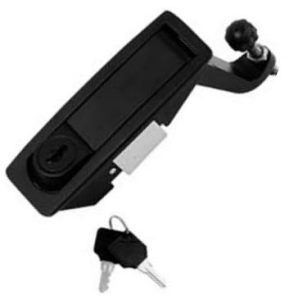
When shopping for latches, you may come across trigger latches. They are commonly used on doors, drawers, cabinets and flaps. Even if you’ve seen trigger latches before, though, you might be unfamiliar with their mechanics. What are trigger latches exactly, and how do they work?
Trigger Latches Explained
Trigger latches are latching components that feature a trigger-like lever. Like all latches, they are installed on rotating surfaces, such as doors. Trigger latches can secure doors shut. Pulling the trigger-like lever, though, will open the door with which the trigger latch is used.
How Trigger Latches Work
They are known as “trigger latches” because they have a trigger-like lever. In its default closed position, the trigger-like lever will remain flush with the latch frame. But you can pull the trigger-like lever out of the latch’s frame to open it.
The trigger-like lever is connected to an arm. When you pull it, the arm will move out of position so that the door or surface opens.
Things to Consider When Choosing Trigger Latches
All trigger latches feature a trigger-like lever; that’s essentially what distinguishes them from other types of latches. However, you can find trigger latches in different styles. If you’re looking to buy trigger latches, there are several things you should consider.
There are locking trigger latches, and there are non-locking trigger latches. Locking trigger latches feature a built-in lock. Most of them have a keyed lock. You’ll only be able to pull the trigger-like lever after inserting and turning the key.
Non-locking trigger latches don’t have a lock. If you’re going to use them for storage solutions that contain valuable items, you may want to choose locking trigger latches. For other purposes, non-locking trigger latches may suffice.
You should consider the material from which the trigger latches are made. Die-cast zinc is a common material used for trigger latch frames. It’s strong, durable and resistant to corrosion. With that said, the lock body and shaft parts may be made of other materials, such as polyamide or zinc-plated steel.
Don’t forget to consider the grip range when choosing trigger latches. The grip range is the distance the trigger latch’s arm can reach. Some trigger latches have a grip range of 6 to 24, whereas others have a grip range of 13 to 46. The longer the grip range, the farther the trigger latch’s arm will reach.
